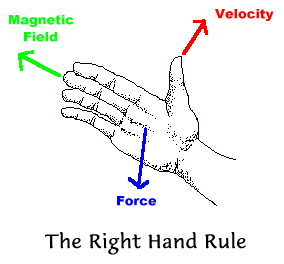

Bar magnets do in fact consist of moving charge which creates a magnetic field. Atoms are inside the magnet, and electrons are inside the atoms. The moving electrons in the atoms of the magnet are what cause the magnetic field. Bar magnets are unique from everday matter (mom's casserole) in that the magnetic fields of their atoms are lined up. Most objects, such as a book, have no order to their atomic magnetic fields; therefore, the net result is a cancelling out of the individual fields. Magnetic substances, on the other hand, display a net magnetic field produced by the order of their individual atomic fields.
Magnetic fields can be visualized by using lines of flux. In order to do this, we create an imaginary north-monopole magnet which could be fashioned from a north-south dipole bar magnet if we were to take away the south pole of the magnet. Such a monopoled magnet does not actually exist, but we physicists like to pretend. Using the north-monopole, we can map out lines of flux for a magnetic source by plotting the paths a monopole would take when released into the magnetic field. The monopole would be attracted to the south pole of the magnet and would move along lines of flux to get to the south pole.

A line of flux is the set of points such that a line drawn tangent to any point on the line of flux indicates the direction of the magnetic field at that point. The set of flux lines perpendicular to a particular area is known as the magnetic flux. The greek letter phi is used to denote magnetic flux. The unit of magnetic flux is the weber (wb).
Magnetic flux density is the number of flux lines per unit area
that permeates a magnetic field. In simpler terms, it is the density of
flux lines in a specific region around a magnet. Magnetic flux density,
denoted by the letter B, is a vector quantity and thus has
direction. The direction of the magnetic flux density at any point is the
direction of the magnetic field at that point. This brings us to our
first formula:
phi B = ----- A
Sometimes it's useful to know the direction of an exerted magnetic force given the directions of the velocity of a charge and the direction of the field. To elucidate this information we should know that the direction of the magnetic field, the direction of the velocity of the charge, and the direction of the magnetic force are all perpendicular to each other. An easy way to determine this information is to use the right-hand rule (obviously dextrist). Hold your right hand with your fingers spread out. Point your fingers in the direction of the magnetic field because they resemble the magnetic flux lines. Point your thumb in the direction of the velocity of the moving charge. Your palm will point in the direction of the force produced by the magnetic field. (Hitting a wall with your palm applies force)
